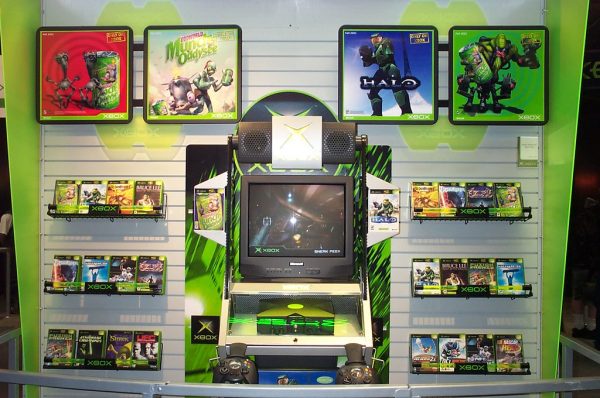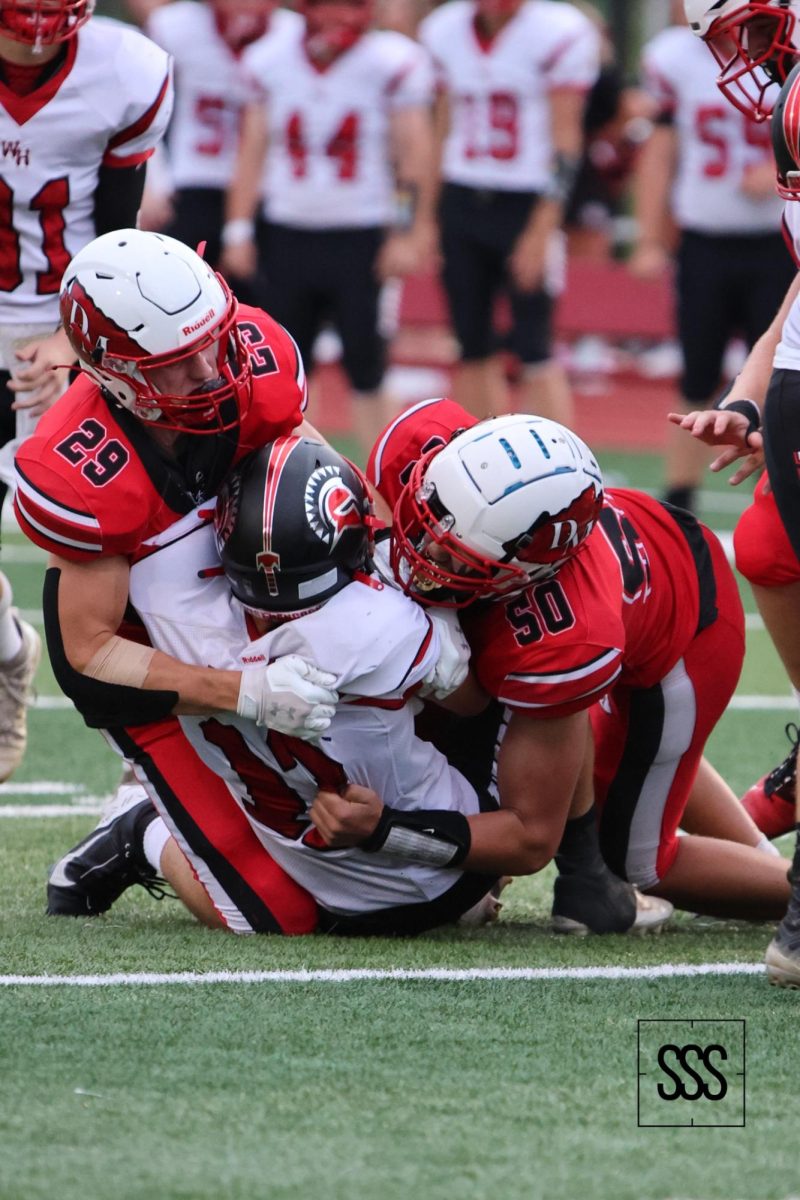The Launch

Dark and dreary, cold and weary, excited and ready… The whipping winds of the November night spreads the plight of coldness among the line of men and women waiting patiently for the clock to strike 12 as the new day begins and the underpaid employee unlocks the gates for the flood of consumers that eagerly desired the fabled green and black box. The night of November 14th 2001 marked the midnight release for the gaming industry’s newest home console the Xbox and the legendary launch title that hails many fans: Halo: Combat Evolved.
This November 15th marked the 23 year anniversary of Halo and all its glory, but it’s not 2001 anymore, and the 2000’s craze of Halo’s golden days are over and through with. So, let’s put on some nostalgia glasses and take a look back into one of the most infamous game series that have influenced thousands after it.
Halo: Combat Evolved (November 15th, 2001)

2001… To prove that the new Xbox can and will succeed in the gaming industry Microsoft really needed a game that would embellish every aspect that makes people love playing video games; this plan eventually led to Microsoft acquiring Bungie as one of its members after a private screening of a Halo demo at an expo in 1999. Microsoft and Bungie are now intertwined and the vast amount of funding they had received boosted Halo’s development significantly. Soon, the first-person story driven, 3D sci-fi shooter was released to open arms and raving reviews.
The campaign and its writing had blown away fans with the excellent science fiction story elements of a futuristic humanity vs aliens, and, of course, the immortalized player controlled character Master Chief. As for music, the composition in Halo is the GOAT. Martin O’Donnell produces some of the most climatic symphonies and can take the mood right back with some ambient electronic groove; playing through the campaign, it feels like every song fits perfectly.
The artistic approach to Halo was very industrialist/futuristic . Every human military is made out of a very colorless and dark metal and uses explosives and kinetic energy while the aliens– or the in-game name The Covenant– would use purple and pink metals with plasma technology.
While the story and art would drive the people in for the new graphics, it’s ultimately the gameplay that would rule over any other aspect. Run, Look, Dive, Shoot, Reload, Run, Cover, Crouch, Burn, Destroy, Save, Fight, Live, Yell, Fly, Bombard, Win or die is the aim of the game. Action is key; if you’re not constantly moving between cover and laying down fire you will perish. The game wants you to play like a super soldier. It plays like liquid every time you boot it up, and even two decades later the feel to Halo’s gameplay is timeless and still plays amazing to this day.
Halo 2 (November 9th, 2004)

2004… With the mass success that Halo 1 brought, it became a household name overnight and fans waited eagerly for the next installment; this excitement from the fans brought expectations for the developers. Just with any industry/medium, making master class projects like Halo are usually just one-off experiences and companies don’t really ever meet what fans expect. But Bungie knew the ball was in their court; Halo 1 had brought more than enough money for expanding Bungie’s work force, and they had the trust with Microsoft to go all out and convince them to start pushing one of the biggest advertising campaigns in gaming history. Soon the whole world had their eyes set on Bungie.
Halo 2’s development can only be described as hell. Employees were pushing 50-70 hour work weeks, working multiple different positions, and their mental health suffered a lot. Luke Timmins, a Bungie employee, once said that “the Halo 2 crunch almost killed Bungie…. It is the most I’ve ever seen humans work in a year and a half.” Bungie suffered like soldiers and their dream and the ideal that was Halo 2 was created with blood, sweat, and a lot of tears.
On November 9th, 2004, the release of Halo 2 was official, but what did the fans think?
Halo 1 might have reached a dedicated audience, but Halo 2 captured the whole gaming scene instantly. The campaign had major improvements in writing and structure. The gameplay had more vehicles, weapons, and features like dual wielding weapons. The graphics prettier, but the most important and popular feature they added was online multiplayer. Now people could enjoy the new Halo not only with their friends in person, but anyone anywhere (remember… early 2000’s). Not only could you play with them, but you could also talk to them as well using a gaming headset.
Now, in the present day online matchmaking is a basic industry standard, but this revolutionized how gamers saw the platform of multiplayer and Halo 2 was one of the first modern examples to use voice chat as a social feature.
The reception to Halo 2 was overwhelmingly positive and has been praised as one of the single greatest games ever made; fans who originally played when it first launched would do everything in their power to relive the hype all over again.
Halo 3 (September 25th, 2007)

2005-2007… As 2005 rolled around the corner, Halo 2 was thriving, and the community was prosperous while millions of players basked themselves in the glory of Halo 2. Microsoft now had a huge foothold in the gaming industry, and once again they planned to release a new console.
Announced in May of 2005, the Xbox 360 was revealed and its technological features were a huge improvement compared to the original Xbox. Fans were starting to wonder what a Halo game would look like on the newest generation of gaming consoles. Bungie was one step ahead of their fans, and Halo 3 development began with hopes of finishing the story they had constructed with the previous two titles.
Halo only needed two things to make it a masterpiece: its ultimate campaign and the entertaining, hilariously social competitive multiplayer.
This was the expectation of fans for Halo 3, but Bungie had different plans.
They had a dedicated fan-base who would play the game for years, but what was missing was a lack of creative control for the players. People could change the rules of the pre-made game modes in custom lobbies, but there was no way to modify or change anything about the Halo multiplayer besides some basic rules. Even though this wasn’t a problem the players were thinking about, Bungie still wanted their platform to be shared with their own community’s ideas. Bungie wanted to give players something they didn’t know they wanted, and Forge was the solution.
Forge allowed players to customize and modify their own game modes, rules, maps, and everyone could upload, share, and play with full multiplayer and voice chat. Forge was groundbreaking, people went from enjoying Halo for hundreds of hours to thousands of hours; the creative control allowed players to enjoy unlimited amounts of content.
Halo 3 at the time was to be the end of a trilogy. Bungie wanted to deliver the ultimate prospect for their fans, and it was soon announced that September 25th 2007 was going to be the rapture for the new console. Following its predecessors, Microsoft launched a huge advertising campaign for Halo 3, and the masses gathered outside of the retail stores on the night of September 24th, again waiting for the clock to strike 12 for another midnight release of Halo.
Would it really surprise you if I said that Bungie had once again blown away any & all expectations? Halo, for the third time, rocked the gaming industry and everyone on Xbox Live was thriving. The campaign reached its exhilarating ending, Martin O’Donnell composed another amazing soundtrack, and the Xbox 360 graphics had brought Halo into another light with newer, prettier graphics under a new and improved engine. The multiplayer was tight and was as good as it has ever been; most fans would say that this is the strongest multiplayer there was.
As I said earlier, Bungie developed Forge with the risk that it could only be as big as the players wanted it to be. Bungie’s investment of Forge paid tenfold; players were obsessed and loved Forge. Everyone was trying to make something out of it. The added feature of Forge increased the popularity and longevity of multiplayer so much that it’s impossible to think of Halo 3 without the magnificence of Forge. The reception to Halo 3 was more immense that of any Halo; they brought in $170 million dollars just in the first week of sales and had successfully solidified themselves in gaming history.
Halo 3: ODST (September 22nd, 2009)

2009… With Halo 3 being complete and the story of Master Chief finished, Bungie wanted to release a small game to cover the gap in between main game releases. The side project’s goal was to make the campaign fans happy and start developing a Halo that was more story than multiplayer.
This side project landed on making a side story that takes place on Earth during a mass invasion of the mega-city of New Mombasa in Africa, set in the time period of Halo 2. Instead of playing as a genetically-modified, armor-wearing super soldier tearing grunts hand by hand, you play as a special force made of regular soldiers called Orbital Drop Shock Troopers (ODST) that would emergency-land in military hot-zones to meet the enemy on the ground.
This game portrays a somber, almost losing feeling, like the situation is out of control and for once victory might not be in the reach of humanity… but just because you are losing the fight, doesn’t mean you can’t win the war. There really was no point in making a dedicated player vs player multiplayer mode in ODST, it ran just like Halo 3.
The only difference was the story and player controlled character, so instead Bungie developed Firefight, a co-op player vs enemy in which a squad of real players will fight waves of enemies increasing in difficulty after each wave. This game-mode was well-liked, and Bungie included it in their next installment Halo: Reach, but remained unique to only these two games. The reception to ODST was great. It didn’t blow the lid off the gaming industry like the previous releases, but it was an extra Halo game that easily had one of the best campaigns in the series, and fans were happy.
Halo: Reach (September 14th, 2011)

2009… Halo 3 was the biggest release for Bungie; the game had left its mark on the culture and will forever be immortalized by the memories of millions. The age of Halo had reached a decade since the original launch of Halo 1, but Bungie wasn’t done with the series just yet. On June 1st, 2009, Bungie announced that they would be working on a prequel to Halo 1, showing the battle of humanities biggest loss in the war between The Covenant that leads up to the events of Halo 1.
Once again fans were fired up, and the beloved series was back on the rise of popularity. Millions of fans now waited and watched while Bungie was doing what it does best. Like ODST, the campaign wasn’t going to star the fan favorite Master Chief; instead Bungie developed the story for Halo: Reach to be a tragedy in which you would play as the spartan known as Noble Six on Noble Team who is composed of five other spartans.
Unlike the original trilogy, this the first time in which the player gets to interact with spartans other than Master Chief; Reach dedicates time to each Noble Team member and gives them each their own personality and dialogue allowing the player to get attached to each member of The Noble Team. As the story develops and the Covenant invasion of the human colony planet, Reach starts to ramp up the characters and the player starts to realize that they were on the losing side of a war. Each mission is a downward spiral as each member of Noble Team is killed off, and the cold realization that there was no way in winning.
One of the most special things about Reach is that even though you play on the losing side, each death shows incredible bravery and sacrifice. Their actions led to the beginning of Halo 1, giving humanity their catalyst to victory.
The campaign wasn’t the only Halo feature to be modified; the multiplayer featured a couple of new mechanics including classes and armor customization in which the player can choose classes based on new abilities that were provided with their armor. This new class system is debated in the community, but most people were indifferent. I prefer the classic Halo’s multiplayer setup with no classes and no armor abilities, but I am just one person.
The most impressive feature that was re-implemented in Reach was the return of Forge. Forge was massive in Halo 3; it was easily the most loved feature of any Halo game. So it was a no brainer that Halo: Reach needed a new and improved Forge. The newly made firefight player vs enemy game-mode from ODST was also added into Reach.
On September 14th, 2011, Halo: Reach was released on the Xbox 360. Players loved the new and improved graphics, which were light and day compared to Halo 3. The campaign impressed many, and plenty of people appreciated the writing, but it brought about some controversy when the game’s story didn’t follow the book story-line. (This wasn’t a popular opinion… most people enjoyed the campaign besides the retcon.) This controversy wouldn’t be nearly as prominent as the mixed reviews for the game’s multiplayer changes. Many fans (including myself) think the new armor ability loadouts did not match the tempo and feel of Halo, but people enjoyed the game as it was and the loadouts didn’t make or break the game.
This time around, Bungie implemented many cosmetics that allowed players to fully customize their own spartan however they wanted. While Bungie may have muddied the waters a little bit with the new loadouts the same can’t be said with Forge.
Forge in Halo: Reach allowed players to have a lot more control over what they can achieve, and, just like Halo 3, increased the game’s lifespan and popularity for years. Firefight wasn’t changed much besides the ability to choose your own narrator, offering many characters from the original trilogy & campaign. Fans liked the gamemode, and anyone could launch and play Firefight anytime they wanted to. With three other players, it was a more casual and easygoing gamemode compared to multiplayer.
After the success, it was time. Bungie had been putting all its effort into Halo for a decade; they wanted to split from Microsoft and go independent which meant… it was time to leave Halo to Microsoft.
When writing this article, my brain was flooded with nostalgia thinking about being younger and playing on the 360… and yeah, I miss it. Playing Halo: Reach and Halo 3 with my brother is something I’m so proud I got to experience. I believe that there’s a common feeling amongst fans of Halo: a nostalgic, melancholy sadness. But remember… we got to experience such great games, and we need to remember them in a positive light and celebrate them for being legendary.
P.S The 343 games are missing from this list… This was not an accident; this was done on purpose.






























